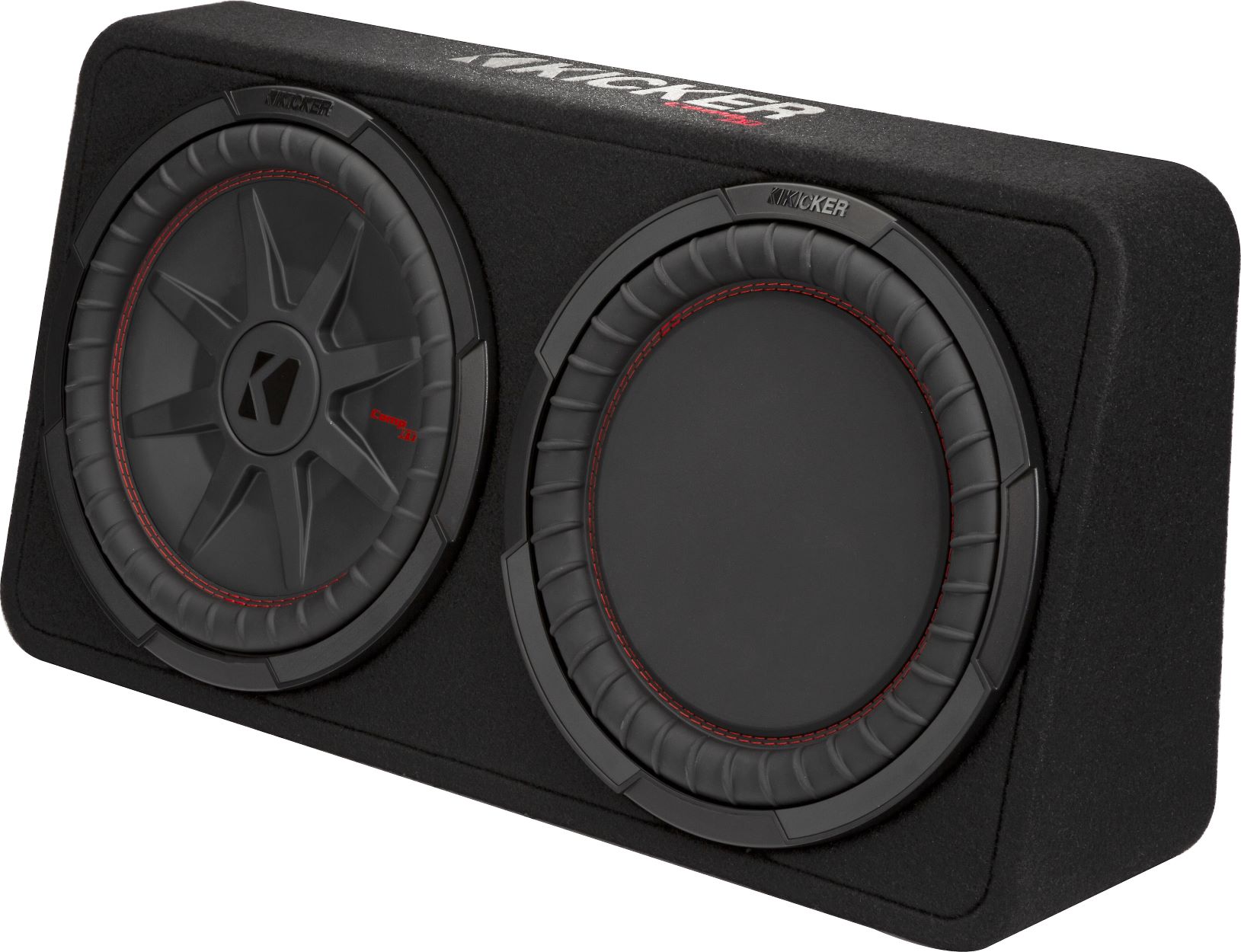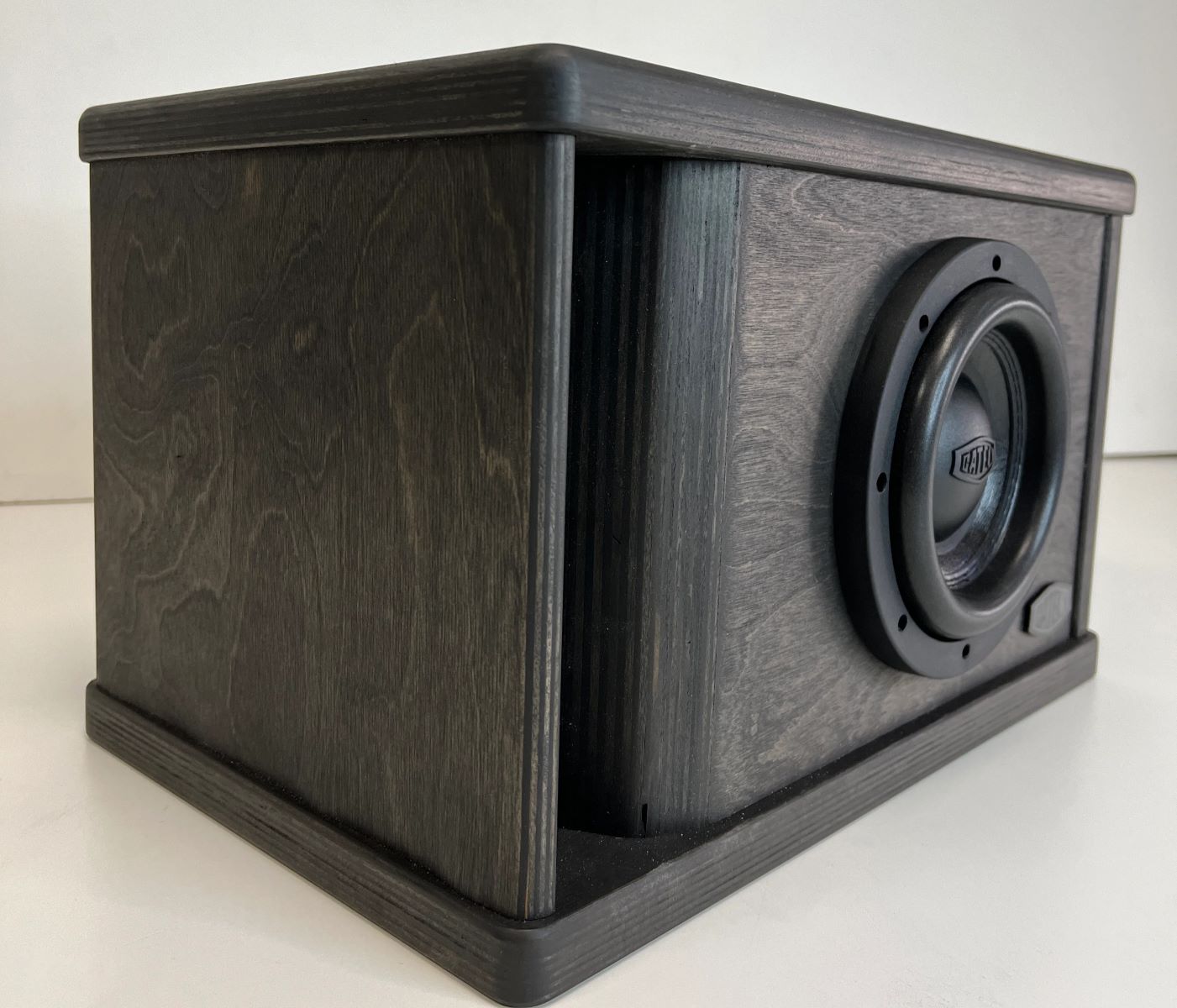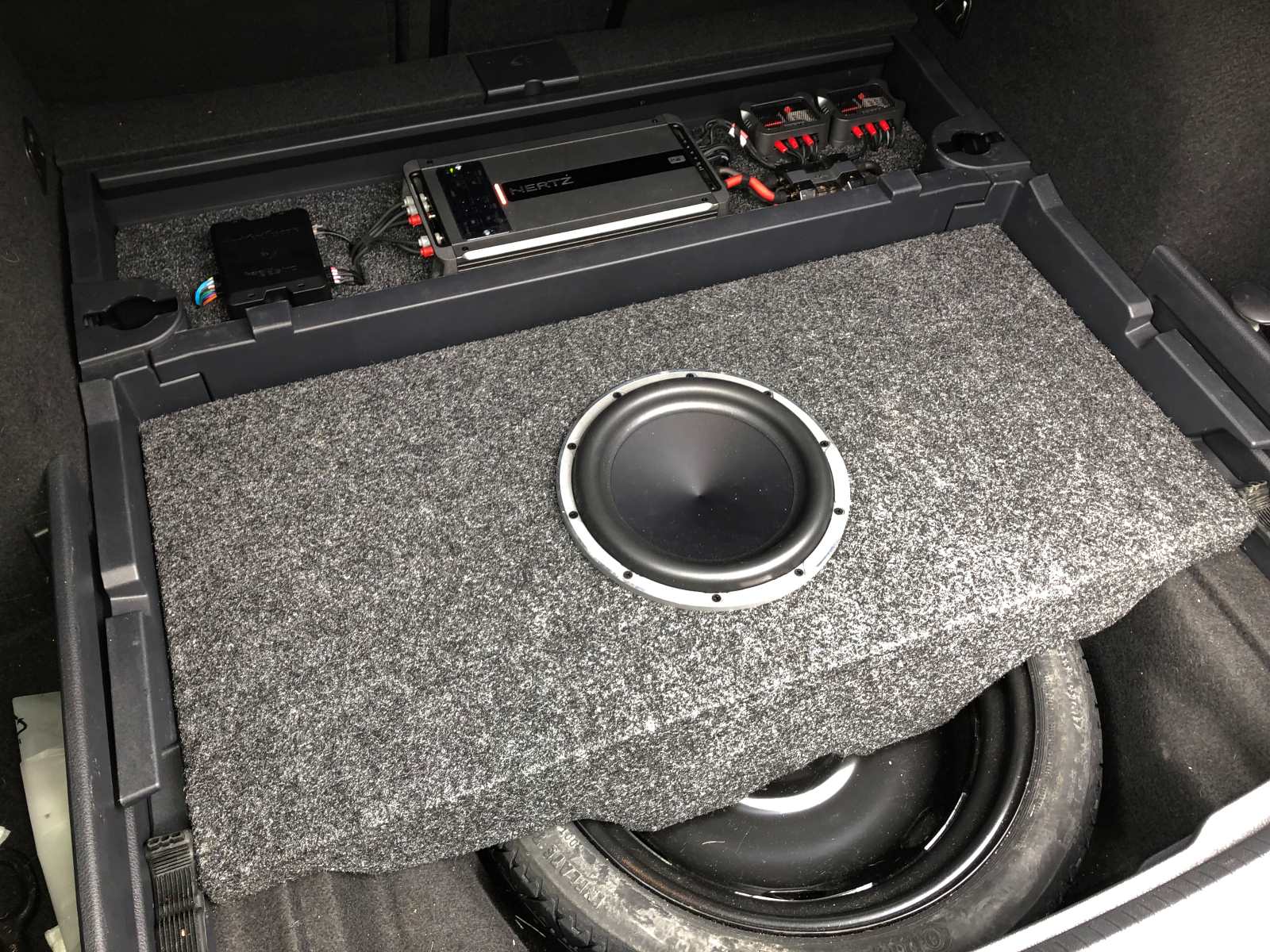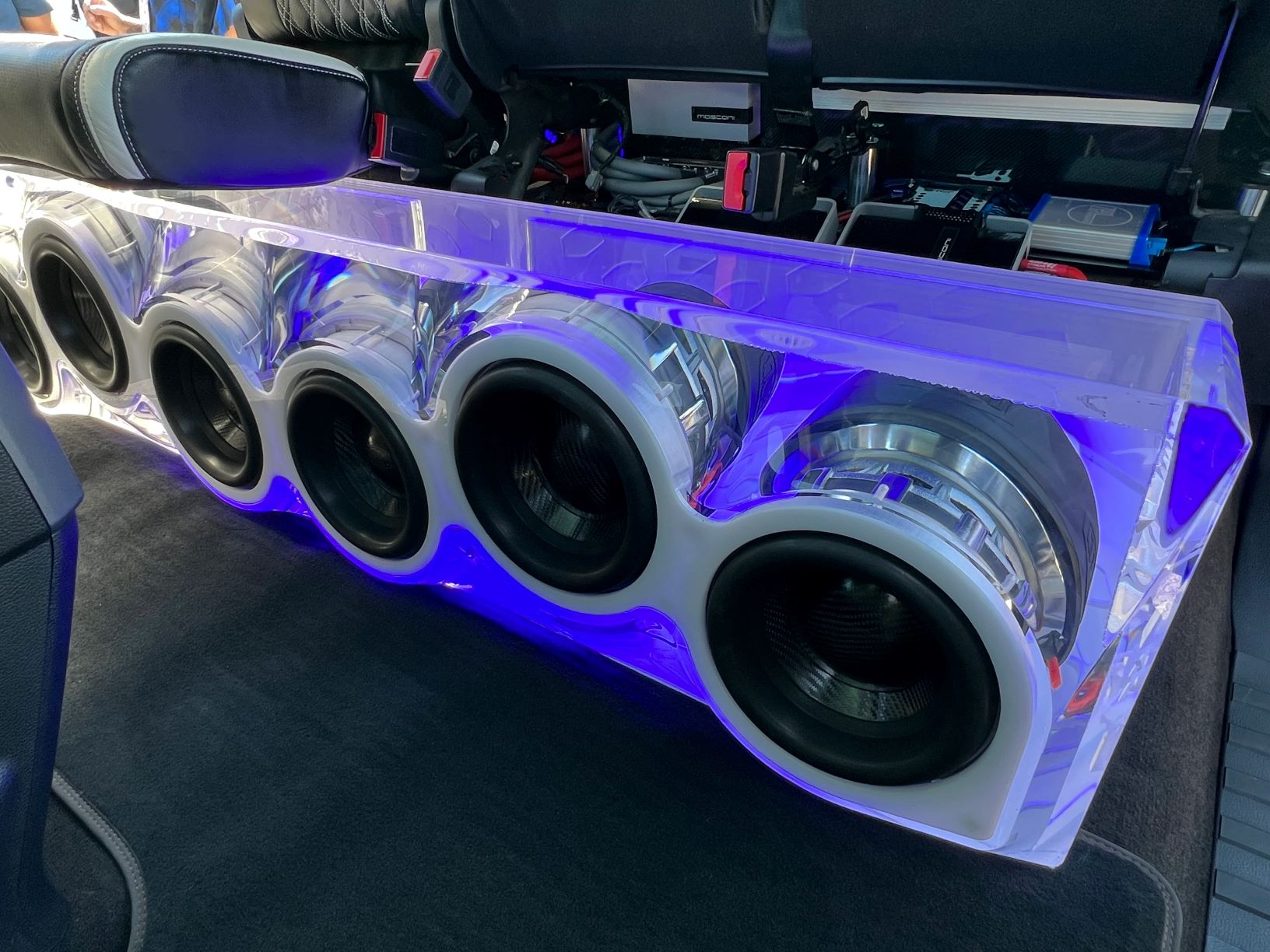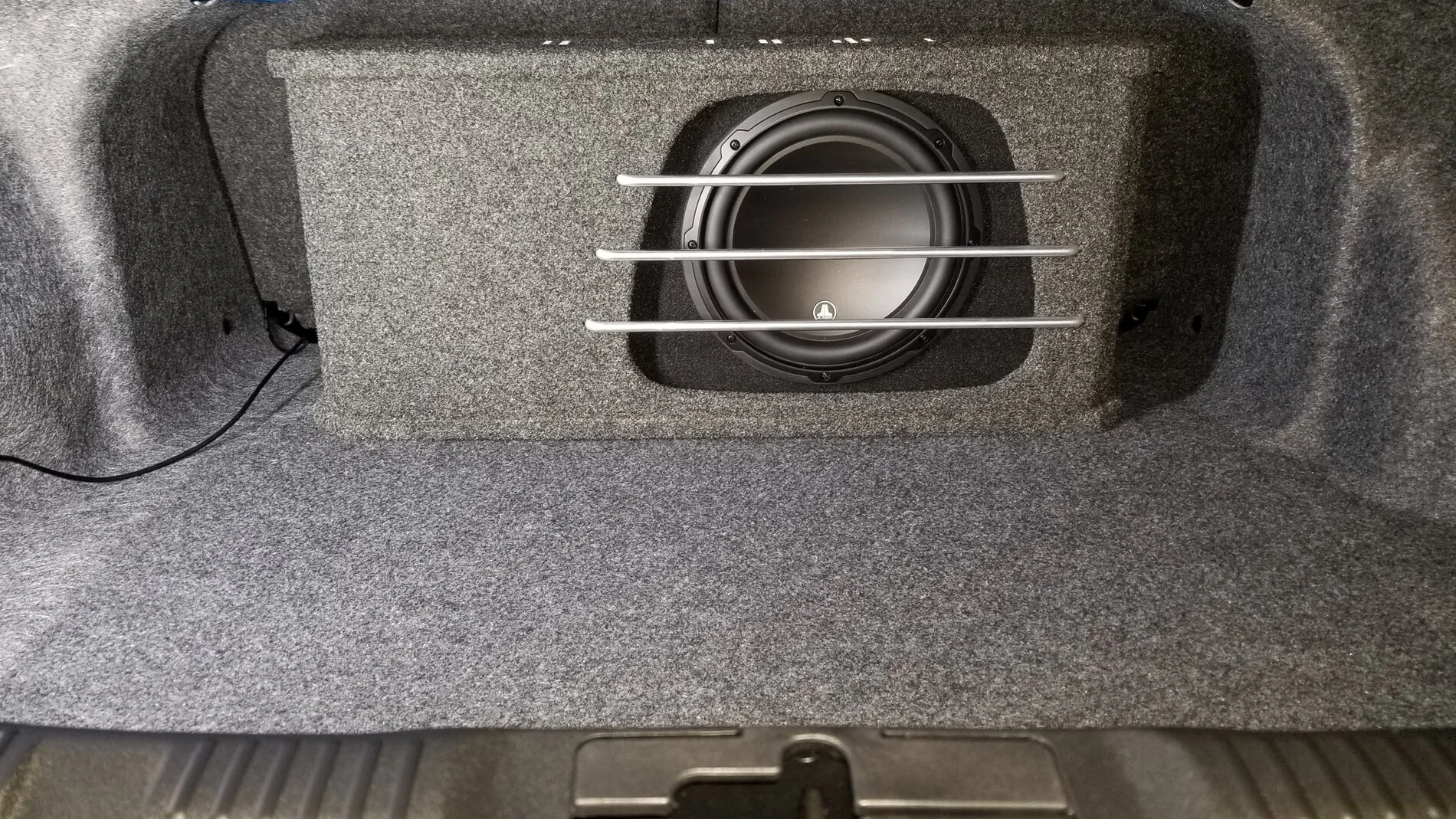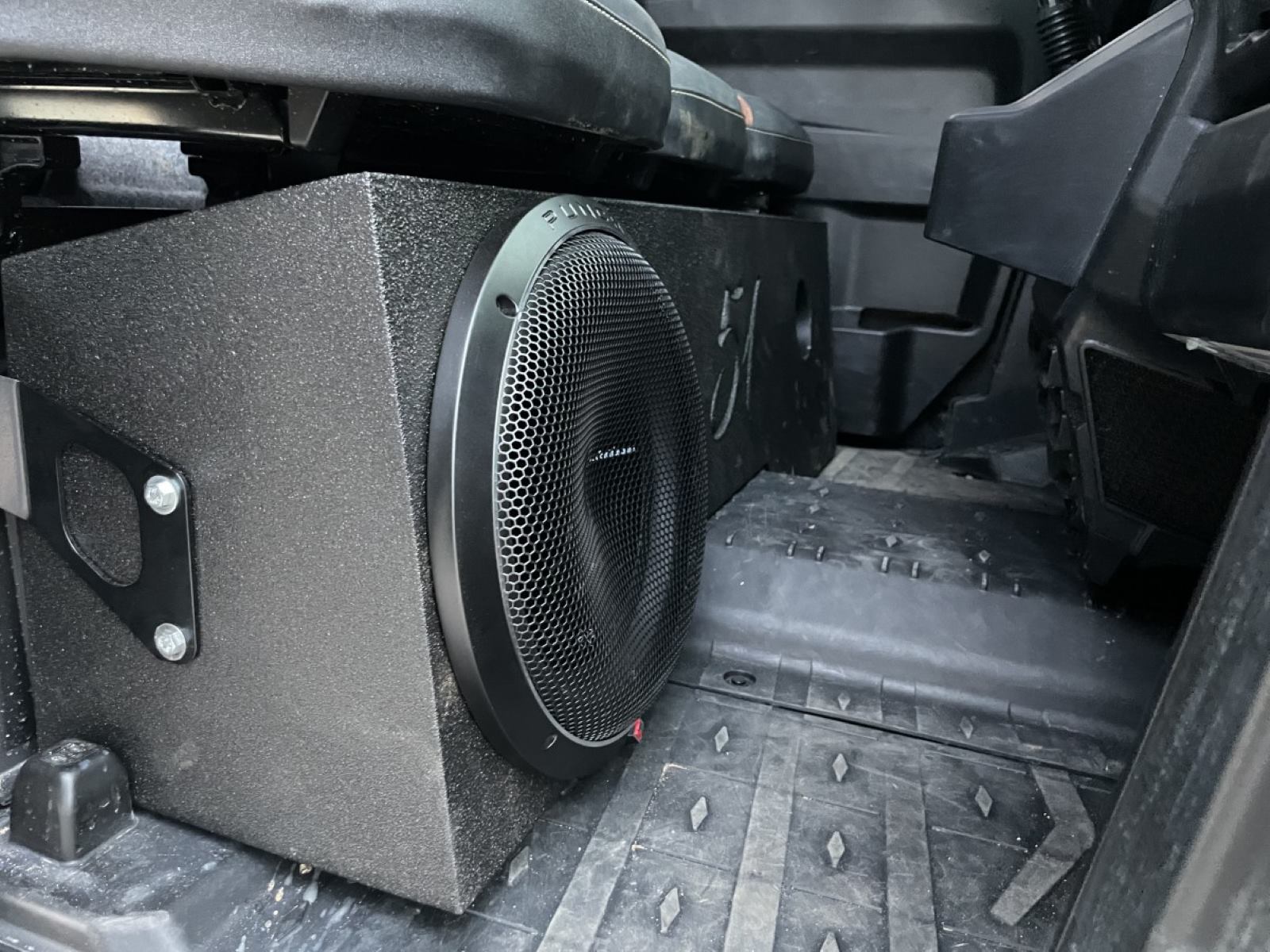Home>Devices & Equipment>Subwoofer>How To Build A 15-Inch Subwoofer Box
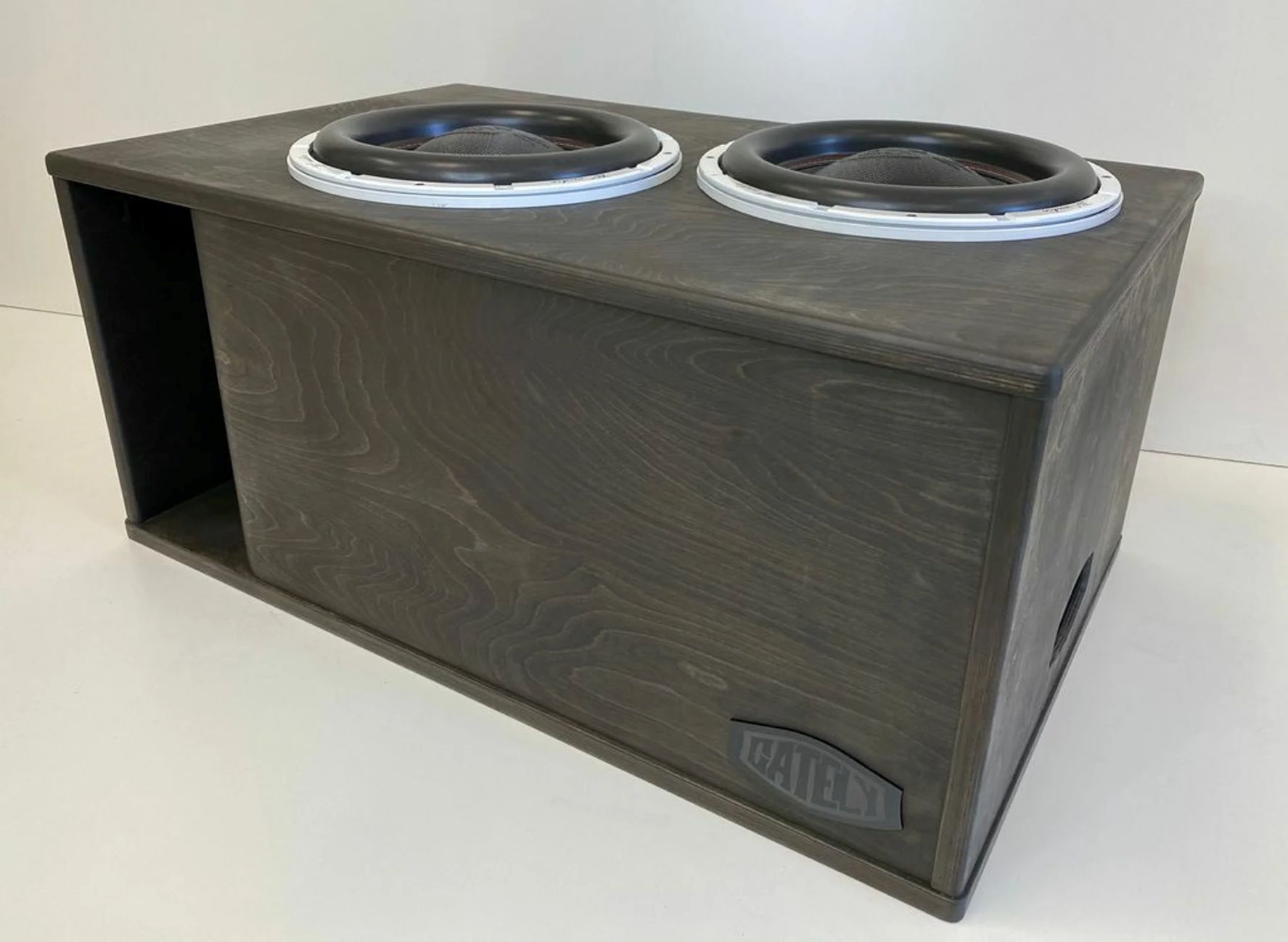

Subwoofer
How To Build A 15-Inch Subwoofer Box
Modified: January 22, 2024
Learn how to build a 15-inch subwoofer box for enhanced audio performance. Expert tips and techniques for optimizing your subwoofer.
(Many of the links in this article redirect to a specific reviewed product. Your purchase of these products through affiliate links helps to generate commission for AudioLover.com, at no extra cost. Learn more)
Table of Contents
Introduction
Welcome to the world of subwoofers – where deep, punchy bass takes your audio experience to a whole new level. Whether you’re a music enthusiast, a film fanatic, or a car audio junkie, a high-quality subwoofer can add depth and rumble to your audio setup. But to truly unlock the potential of your subwoofer, you need a well-designed and properly built subwoofer box.
A subwoofer box, also known as an enclosure, plays a crucial role in the performance of your subwoofer. It not only protects the subwoofer but also optimizes its sound output by providing the right amount of air space and controlling the airflow. Building your own subwoofer box allows you to customize the design to suit your specific needs, ensuring optimal sound quality and bass response.
In this step-by-step guide, we will walk you through the process of building a 15-inch subwoofer box. This size is popular among audio enthusiasts due to its ability to reproduce deep bass frequencies with power and accuracy. Whether you’re a seasoned DIYer or a beginner, this guide will provide you with all the necessary information and tips to successfully build your own subwoofer box.
Before we dive into the construction process, it’s important to note that building a subwoofer box requires some basic carpentry skills and access to tools such as a circular saw, drill, and screwdriver. If you don’t have much experience with woodworking, don’t worry – with a little patience and careful attention to detail, you’ll be able to create a professional-looking subwoofer box that delivers impressive bass performance.
So, without further ado, let’s get started on creating a subwoofer box that will make your music thump and your movies roar!
Step 1: Gather Materials and Tools
Before diving into the construction process, gather all the necessary materials and tools to ensure a smooth and efficient building experience. Here’s a list of what you’ll need:
- 15-inch subwoofer: Choose a high-quality model that suits your audio preferences and power handling requirements.
- MDF (Medium-Density Fiberboard) or plywood: This will serve as the main material for constructing the subwoofer box. Opt for at least ¾-inch thick MDF or plywood for durability and optimal sound quality.
- Wood screws: Select screws that are appropriate for your chosen wood thickness and ensure they are long enough to securely fasten the panels together.
- Wood glue: Use a strong, waterproof wood glue to reinforce the joints and increase the overall strength of the subwoofer box.
- Speaker terminal cup: This component serves as the connection point between the subwoofer and the amplifier. Choose a terminal cup that fits the size of your speaker wire.
- Carpenter’s tape measure: Accurate measurements are crucial for constructing a well-fitting and properly sized subwoofer box.
- Circular saw or jigsaw: A cutting tool will be needed to accurately shape the wood panels according to the measurements.
- Drill: You’ll need a drill with different drill bits for making pilot holes and screwing the panels together.
- Screwdriver: A powered screwdriver or a set of screwdrivers of various sizes will make assembling the subwoofer box faster and easier.
- Sanding block or sander: Smooth out the edges and surfaces of the MDF or plywood panels for a professional appearance.
- Paint or veneer: Adding a finish to the subwoofer box not only enhances its visual appeal but also provides additional protection against moisture.
Make sure to gather all the necessary materials and tools before you begin the construction process. This will save you time and allow for a hassle-free building experience. Once you have everything ready, you can move on to the next step: measuring and cutting the wood panels.
Step 2: Measure and Cut the Wood Panels
Accurate measurements and precise cuts are essential for building a subwoofer box that fits your subwoofer perfectly and produces optimal sound quality. Follow these steps to measure and cut the wood panels:
- Start by measuring the dimensions of your subwoofer. Take note of the width, height, and depth of the subwoofer. These measurements will determine the internal dimensions of the subwoofer box.
- Next, determine the desired external dimensions of the subwoofer box. Keep in mind any space restrictions or aesthetic preferences.
- Using these measurements, calculate the dimensions for each panel of the subwoofer box. You will need a front panel, back panel, top panel, bottom panel, and two side panels.
- Transfer the measurements onto the MDF or plywood sheets using a tape measure and a pencil. Make sure to double-check the measurements before cutting.
- Using a circular saw or jigsaw, carefully cut along the marked lines to create each panel. Take your time and use clamps or a guide if needed to ensure clean and straight cuts.
- Once all the panels are cut, double-check that the dimensions are accurate and that the panels fit together properly. Make any necessary adjustments before moving on to the next step.
It’s crucial to be precise when measuring and cutting the wood panels to ensure a snug and secure fit for the subwoofer. A tight-fitting box will minimize air leaks and vibrations, resulting in cleaner and more impactful bass reproduction.
Remember to consider the thickness of the material when measuring and cutting the panels. The thickness of the MDF or plywood should be taken into account to ensure the final dimensions of the box accommodate the subwoofer and provide enough internal volume for optimal performance.
Once you have measured and cut the wood panels to the correct dimensions, you’re ready to move on to the next step: marking and cutting the speaker hole.
Step 3: Mark and Cut the Speaker Hole
The speaker hole is where the subwoofer will be mounted in the subwoofer box. It is essential to accurately mark and cut the speaker hole to ensure a secure and proper fit. Follow these steps:
- Place the front panel of the subwoofer box on a flat surface with the correct orientation.
- Measure the diameter of the subwoofer’s driver or mounting flange. This measurement will determine the size of the speaker hole.
- Using a compass or a round object with a diameter slightly larger than the subwoofer’s, center it on the front panel and trace the outline.
- Once the outline is marked, carefully drill a pilot hole inside the traced circle. Make sure it is large enough for your jigsaw blade to fit through.
- Insert the jigsaw blade into the pilot hole and carefully cut along the marked outline. Take your time and follow the line to ensure a smooth and accurate cut.
- After cutting out the speaker hole, test fit the subwoofer. Ensure it fits snugly without any gaps or protrusions.
- If needed, use a file or sandpaper to smooth any rough edges around the speaker hole. This will prevent any potential damage to the subwoofer or speaker wires.
When marking and cutting the speaker hole, it’s crucial to be precise and take your time. A properly sized and centered speaker hole will ensure a secure and airtight fit, minimizing sound leaks and vibrations. This leads to better bass response and overall audio quality.
Remember to refer to the subwoofer manufacturer’s guidelines for the recommended mounting depth and clearance requirements. Ensure that the speaker hole provides enough space for the subwoofer to operate without any physical obstructions.
With the speaker hole cut out, you’re now ready to move on to the next step: assembling the subwoofer box.
Step 4: Assemble the Box
With the wood panels cut and the speaker hole prepared, it’s time to assemble the subwoofer box. Follow these steps to ensure a sturdy and well-constructed box:
- Start by applying a thin layer of wood glue to the edges of each panel that will be joined together. This will provide added strength and stability to the box.
- Align the panels according to the dimensions of the box, making sure that all edges are flush. Secure the panels together temporarily using clamps to hold them in place.
- Pre-drill pilot holes into the edges of the panels, spaced evenly apart. This will prevent the wood from splitting when you drive in the screws.
- Using wood screws and a screwdriver or drill, fasten the panels together by inserting screws through the pre-drilled holes. Begin with one corner and gradually work your way around, tightening the screws snugly.
- Double-check that the box is square by measuring the diagonals. The measurements should be equal to ensure the box is properly aligned.
- Remove any excess wood glue that may have seeped out during the assembly process. Use a damp cloth or sponge to wipe away the excess before it dries.
- Allow the box to dry according to the instructions on the wood glue packaging. This typically takes several hours, but it’s best to leave it overnight to ensure a strong bond.
During the assembly process, take extra care to ensure that the panels are aligned correctly and that the box remains square. A well-constructed box will provide a solid foundation for your subwoofer and contribute to the overall sound quality.
Remember, don’t overtighten the screws as this may cause the wood to split or crack. Apply gentle pressure to secure the panels without compromising their integrity.
Once the box is assembled and the wood glue has dried, you’re ready to move on to the next step: reinforcing the box for added durability.
Step 5: Reinforce the Box
Reinforcing the subwoofer box is an important step to ensure its durability and longevity. By adding reinforcements, you can enhance the structural integrity and minimize vibrations. Here’s how to reinforce the box:
- Measure and cut reinforcement bracing strips from the same material used for the box panels. These strips should be approximately 1-2 inches wide and long enough to span the interior length of the box.
- Apply wood glue to one side of each bracing strip and position them diagonally across the interior corners of the box. This will create an X-shaped pattern, reinforcing the box’s joints.
- Secure the bracing strips in place by driving wood screws through the box panels and into the strips. Make sure the screws are countersunk to prevent them from protruding.
- If desired, you can also add additional bracing strips along the length of the box to further enhance its rigidity. These strips should be positioned parallel to each other, spanning the side panels.
Reinforcing the box with bracing strips helps to distribute any internal pressure caused by the subwoofer’s movement, reducing the risk of panel vibrations and potential damage to the box. This reinforcement also ensures that the box maintains its shape and structural integrity over time.
Take note that the number and positioning of the bracing strips may vary depending on the size and design of your subwoofer box. It’s important to assess the load-bearing points and reinforce accordingly.
Once the reinforcement is complete, take a moment to inspect the box for any potential weak points or areas that may need additional reinforcement. Making any necessary adjustments now will contribute to the overall stability and performance of the subwoofer box.
With the box reinforced, you’re ready to move on to the next step: sanding and finishing the box to give it a polished look.
Step 6: Sand and Finish the Box
Once the subwoofer box is assembled and reinforced, it’s time to give it a smooth and professional finish. Sanding and finishing the box not only enhances its appearance but also protects the wood from moisture and wear. Follow these steps to achieve a polished look:
- Begin by using a sanding block or a power sander to smooth out the surfaces of the box. Start with a coarse-grit sandpaper to remove any rough edges or imperfections, and gradually move to finer-grit sandpaper for a smoother finish.
- Sand both the exterior and interior surfaces of the box, paying close attention to the edges and corners. This will ensure a consistent and even texture throughout.
- After sanding, use a clean, damp cloth to remove any sawdust or debris from the box. Allow it to dry completely before proceeding to the next step.
- Decide on the desired finish for your subwoofer box. Options include painting, staining, or applying a protective clear coat. Choose a finish that complements your personal style and matches the aesthetic of your audio setup.
- If painting, apply a primer coat to the box to create a smooth surface and enhance paint adhesion. Once the primer is dry, apply multiple thin coats of paint, allowing sufficient drying time between each coat.
- If staining, first apply a wood conditioner to ensure an even absorption of the stain. Then, apply the stain with a brush or cloth, following the manufacturer’s instructions. Allow the stain to dry and apply additional coats if desired.
- If applying a clear coat, choose a water-resistant or waterproof finish to protect the wood. Apply multiple thin coats, allowing each coat to dry before applying the next.
- After the final coat is applied and dried, inspect the box for any drips, bubbles, or imperfections. If necessary, lightly sand the surface and apply touch-ups to achieve a flawless finish.
Sanding and finishing the box not only adds a professional touch but also protects the wood from moisture and physical damage. It’s important to take your time and apply the finish carefully for the best results.
Remember to work in a well-ventilated area and wear appropriate safety gear, such as a dust mask and goggles, when sanding or applying finishes. This will help maintain a safe and healthy work environment.
With the box sanded and finished, you’re almost ready to install the subwoofer. But first, let’s move on to the next step: installing the speaker terminal and wiring.
Step 7: Install the Subwoofer
With the subwoofer box sanded and finished, it’s time to install the subwoofer itself into the box. Follow these steps to ensure a proper and secure installation:
- Place the subwoofer into the speaker hole of the front panel. Ensure that the subwoofer is aligned properly and that the mounting flange or screws are lined up with the pre-drilled holes, if applicable.
- If your subwoofer has a mounting flange with screw holes, use your drill to insert screws through the flange into the box. Make sure to tighten them securely, but be cautious not to overtighten and potentially damage the subwoofer or box.
- If your subwoofer doesn’t have a mounting flange, you can use a subwoofer gasket or sealant to create a tight and secure seal between the subwoofer and the front panel of the box. Apply the gasket or sealant according to the manufacturer’s instructions.
- Ensure that the subwoofer is centered properly in the speaker hole and that it fits snugly. Any gaps or misalignments can affect the sound performance.
- Connect the speaker wires from the amplifier to the terminals on the back of the subwoofer. Make sure to observe the correct polarity (+/-) to ensure proper speaker cone movement and phase alignment.
- Once the subwoofer is securely installed and connected, double-check all the wiring and connections to ensure there are no loose or exposed wires that could cause electrical issues or damage to the subwoofer.
When installing the subwoofer, it’s important to handle it carefully and avoid any excessive force or pressure. Treat the subwoofer delicately to prevent any damage to the cone or internal components.
Additionally, consider using sealing tape or caulking around the edges of the speaker hole to minimize air leaks and ensure optimal sound performance. This will help prevent any unwanted vibrations or loss of bass impact.
With the subwoofer securely installed, you’re now ready for the final step: testing the subwoofer to ensure it’s functioning properly.
Step 8: Test the Subwoofer
After successfully installing the subwoofer, it’s crucial to test its performance to ensure it’s working correctly. Here are the steps to test your subwoofer:
- Connect the subwoofer to your audio source, such as a stereo receiver, home theater system, or car amplifier, using the appropriate cables.
- Set the volume and bass levels to a moderate level on your audio source, ensuring that it’s not too loud or too soft.
- Play a variety of audio content that includes deep bass frequencies, such as music with heavy bass lines or movie scenes with explosive sound effects.
- Listen for a balanced and rich bass response. The subwoofer should accurately reproduce the low-frequency sounds, adding depth and impact to the audio without overpowering the midrange or treble frequencies.
- Adjust the subwoofer’s settings and location if needed. Experiment with the volume and crossover settings to achieve the desired balance between the subwoofer and the other speakers in your audio setup.
- Pay attention to any distortion, rattling sounds, or abnormal behavior from the subwoofer. These may indicate a problem with the installation or the subwoofer itself.
During the testing phase, it’s important to listen critically and evaluate the subwoofer’s performance. Consider factors such as clarity, accuracy, and the integration of the subwoofer with the rest of your audio system.
If you encounter any issues or notice unsatisfactory performance, double-check all the connections and settings, and make any necessary adjustments. Consider consulting the subwoofer’s user manual or seeking assistance from a professional if needed.
Once you are satisfied with the performance of your subwoofer, sit back, relax, and enjoy the deep and immersive bass experience that it brings to your audio content.
Congratulations! You have successfully built and tested your own 15-inch subwoofer box. Now you can fully appreciate the powerful and resonant bass that will enhance your music, movies, and overall audio enjoyment.
Remember to regularly clean and maintain your subwoofer and subwoofer box to ensure optimal performance and longevity. Dusting the exterior, checking for loose connections, and inspecting for any signs of damage are good practices to keep your subwoofer in top condition.
Enjoy the thumping bass and immersive audio experience that your DIY subwoofer box brings to your listening environment!
Conclusion
Congratulations on completing the construction of your own 15-inch subwoofer box! By following the steps outlined in this guide, you have built a customized enclosure that will enhance your audio experience with deep, powerful bass. Building your own subwoofer box allows you to tailor it to your specific needs and preferences, ensuring optimal sound quality and performance.
From gathering the materials and tools to measuring and cutting the wood panels, assembling and reinforcing the box, sanding and finishing, and finally installing and testing the subwoofer, each step is crucial in creating a sturdy and properly functioning subwoofer enclosure.
Remember, attention to detail and careful craftsmanship are key to achieving the best results. Take your time, double-check measurements, and follow the instructions provided by the subwoofer manufacturer.
Now that you have completed the construction and testing process, you can enjoy the deep, rumbling bass that your subwoofer box brings to your audio setup. Whether you’re listening to music, watching movies, or experiencing immersive gaming, your subwoofer will provide the low-end impact that takes your audio experience to the next level.
Don’t forget to make any necessary adjustments to the settings and positioning of your subwoofer to achieve the optimal sound balance for your specific listening environment. Experiment with different genres of music and audio content to fully appreciate the capabilities of your subwoofer box.
We hope this guide has been informative and inspiring. Building your own subwoofer box is not only a rewarding DIY project but also an opportunity to customize your audio setup and elevate your listening experience. Enjoy the powerful, deep bass and the immersive sound that your 15-inch subwoofer box brings to your audio system!

